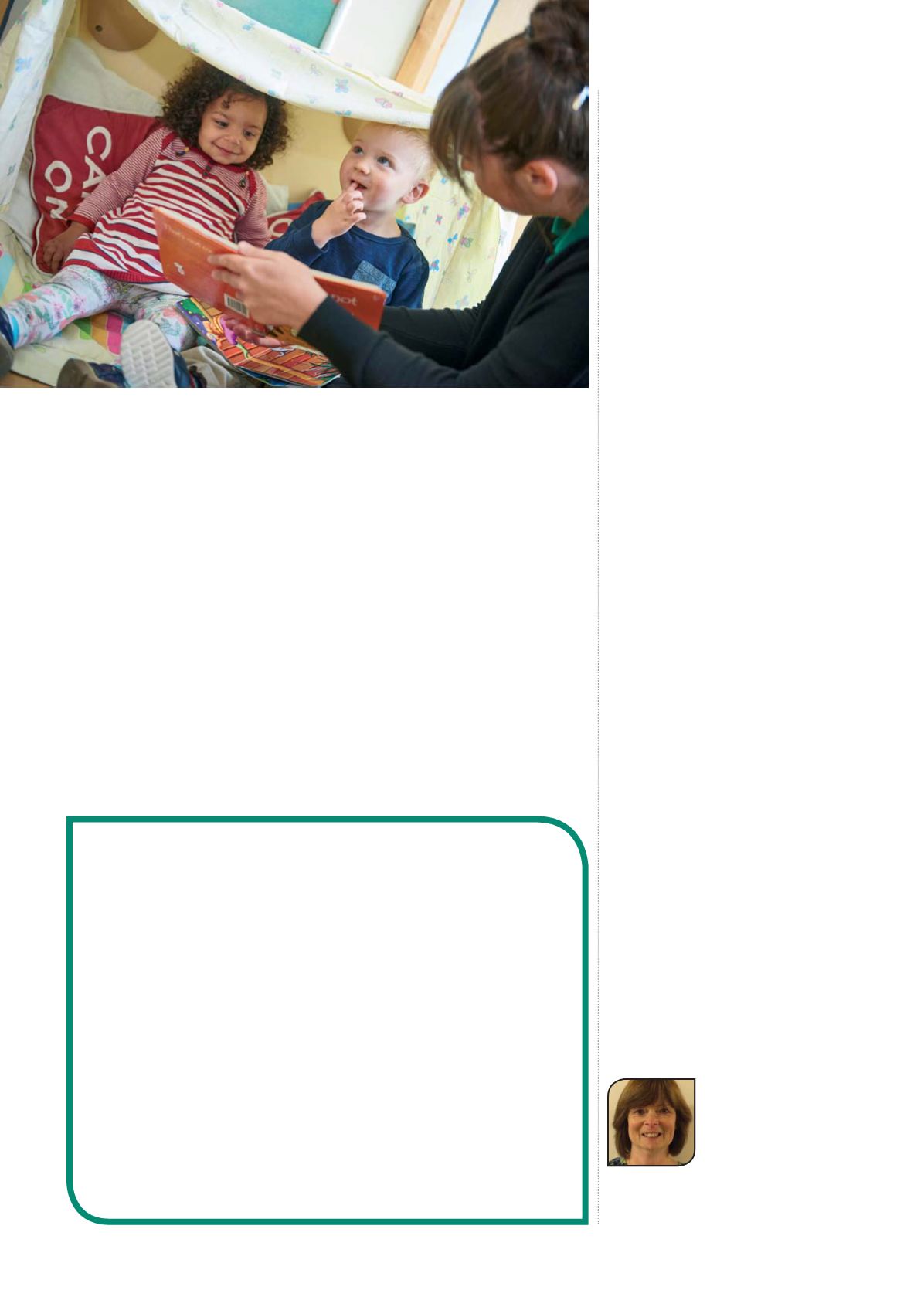
58
earlyyears.teachwire.net
individual children, the software also enables
the production and analysis of information
about specific cohorts and groups of children,
e.g. EAL, funded/non-funded two-year-olds,
boys/girls. This helps practitioners to
continually reflect upon their provision and
practice, considering action points and
addressing any barriers to the progress of
particular groups.
EFFECTIVE
MANAGEMENT
The introduction of the Common
Inspection Framework has seen an
increased focus on how effective the
managers of early years settings are in
leading high-quality provision and driving
improvement. Leaders of settings that have
implemented e-learning journals comment
on how their introduction has helped
them fulfil their role more effectively in a
number of ways.
Firstly, it enables them to monitor and
keep an effective overview of the progress
and achievements of both individuals and
groups easily online, and to produce
reports and evidence for both internal use
– to inform future planning and
improvements – and external bodies such
as Ofsted. The introduction of funding
initiatives such as the Early Years Pupil
Premium means that managers must be
able to justify how they have invested
money by demonstrating that it has made a
real difference to the progress of children
for whom it is claimed; this software
supports this responsibility very effectively.
Secondly, it seems that the use of
e-learning journals enables managers to
monitor and support staff performance and
development in a more time-efficient and
innovative manner. Managers can easily
access the observations and assessments
of individual practitioners and identify any
CPD requirements as a result. Similarly,
managers can encourage staff to access
each other’s journals, enabling moderation,
improved consistency of judgements and
the sharing of good practice.
Thirdly, managers report the positive
effect that introducing e-learning journals
has had on their staff’s morale and
confidence in their professional role and
abilities. The whole process is made
simpler and less arduous, and the stress
caused by lack of time is alleviated.
CHOOSING SOFTWARE
the setting, promoting attachments with
their key children and providing great
opportunities for communication and
language development.
DATA COLLECTION
Tracking and being accountable for every
child’s progress and achievements is part of
every practitioner’s professional
responsibility. A clear system of collecting
and analysing the data about each child at
regular intervals is essential to this process;
this information is needed to ensure that any
concerns about development can be
identified and addressed quickly, and that
the most appropriate environment and
support can be provided for every child.
Most software packages allow this to be
done quickly and efficiently by transferring
all observations and assessments to a
related development tracking system, and
providing summative data information easily.
As well as providing this data for
Deborah Fielden
is an early years
consultant. Follow
@DeborahFielden.
This article first
appeared in Teach
Early Years magazine – visit
teachwire.net to access more
outstanding advice and to subscribe.
PARTNERSHIP
WITH PARENTS
This is an area in which the introduction
of e-learning journals really makes a
significant impact; feedback from both
practitioners and parents themselves is
overwhelmingly positive. Most software
packages include a notification feature so
that parents are made aware when new
observations and assessments have been
added. Parents can also add their own
observations and photographs from home,
opening new lines of communication,
supporting consistency between home
and setting, and enabling successful
partnership working.
Parents enjoy the opportunities that
sharing photographs with children away
from the setting gives them to talk about
what they have been doing during the
day, helping them relive and retell their
experiences. Similarly, practitioners can use
the home photos to start conversations at
D
WHAT TO LOOK FOR IN AN E-LEARNING JOURNAL PACKAGE...
Ease of use:
Choose a package that everyone is happy with. Take advantage of free
trials and review the pros and cons of each option as a team before making
the final decision. It will take time for everyone to become confident using
any new system, but some are easier to get to grips with than others!
Parent participation:
Make sure that the software allows easy two-way sharing of information
between home and setting. Be vigilant about checking the security systems
and protocols offered by the package, as this has obvious safeguarding and
data protection implications for your setting.
Data production and analysis function:
Look for a package that can deliver progress and achievement data for
both individual and specific groups of children, enabling easy analysis to
inform reflection and subsequent improved provision and practice. This will
also enable you to provide evidence for Ofsted during an inspection.


